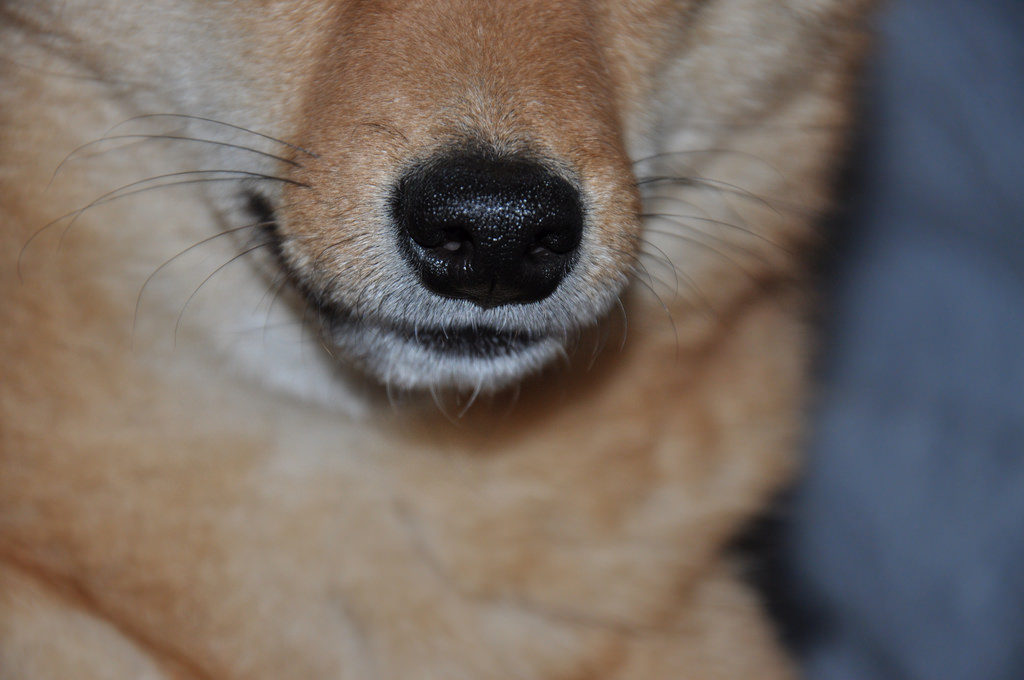Yes, dog whiskers do grow back out eventually, usually within a few months. They may, in fact, grow back longer than they were!
Do dog whiskers fall out
 Every now and then you might find a whisker that’s fallen out or your dog’s whiskers. This is common and nothing to worry about as long as it happens naturally and not a result of a human pulling it out.
Every now and then you might find a whisker that’s fallen out or your dog’s whiskers. This is common and nothing to worry about as long as it happens naturally and not a result of a human pulling it out.
Should you cut your dog’s whiskers
It is quite a common practice with show dogs to cut the whiskers off for appearance. It is best not to cut a dog’s whiskers as they do serve a very important function. Removing a dog’s whiskers can lead to confusion and decreased spatial awareness.
You should never pull a dog’s whiskers out as the nerve endings in the follicle are very sensitive and that would cause your dog discomfort. Whiskers are not painful when they are cut, as they don’t have pain receptors in the actual
whisker.
How long does it take for dog whiskers to grow back out
How long it takes for dog whiskers to grow back does vary, but it should only take a month or two.
Do poodles have whiskers
You may wonder if poodles have whiskers as it is quite common with poodle grooming to shave the face clean. Yes, all dogs have whiskers. Some dogs may develop multitudes of long, thick whiskers while others may have few. If you do have your poodles face cleanly shaved the whiskers will grow back. It has become a lot less common for poodles to have the traditional shaved poodle face. People are opting more for the Teddy style for poodle heads and face these days.
Do dog whiskers have nerves
Each whisker on your dog is rooted in a hair follicle that’s filled with blood vessels and nerves. The whisker itself cannot feel anything. Instead, objects that brush up against a whisker including the air cause it to vibrate, which then stimulates the nerves in the hair follicle. There is a specialized skin receptor closely associated with the nerves called Merkel cells (MCs). A special type of cell found right below the top layer of skin. These cells are very close to the nerve endings that receive the sensation. The cells also contain substances that may act as hormones or pheromones. There are Merkel Cell rich areas on a dog’s snout and whiskers, which makes these high-sensation areas. This is why I personally am not a big fan of Halti or Gentle Leader type face harnesses.

Why do dogs have whiskers
So what is the function of whiskers on dogs? Whiskers, also known as Vibrissae, are long coarse hairs that protrude from three areas on your dogs face. Those areas are the dog’s muzzle, under the chin or jaw and above their eyes.
Whiskers are different from your dog’s fur as they are long, thicker and more rigid. The main function of whiskers is to aid with vision by providing additional sensory information and providing spacial awareness. They serve as receptors for important information about the size, shape, and speed of nearby objects. For dogs that have a loss of eye vision or are completely blind will rely on their whiskers to feel their way around. Dogs can also sense something even if it doesn’t actually touch a whisker. For example, a dog can pick up on the fact that there’s a wall nearby because of a change in air currents.
Whiskers also help dogs avoid being poked in the face or eyes, especially the whiskers above the eyes when going through long grass or bush. By cutting a dog’s whiskers you can compromise their ability to feel what is around their face.
Whiskers also serve an important function when a dog is swimming. They not only aid head position so they give their muzzle above water, they can help determine which way the current is flowing.
Whiskers can give a good clue in dog body language and to how a dog is feeling. Dogs will often flare their whiskers and then point them in a forward direction when they feel threatened. This may also mean that whiskers play a role in the defense strategy during a fight with prey and other dogs.
I hope I was able to answer many of the questions you may have had about dog whiskers. You may also be interested in
Very interesting article and it taught me a lot. Our 7 year old Shih Tzu’s jaw whisker seems to be causing a scratching reflex where her hind leg does a scratching motion lasting 5 to 10 seconds. Could the Merkel Cells, you mentioned, be the cause? Our vet treated her for a possible ear infection, but that made no difference.
I understand if you don’t have time to answer questions. Again, a great article and thanks
That is a good question. I guess that by stimulating the nerve ending they can cause a reflex elsewhere in the body. My guess is it is probably more to do with the ear infection. You often see dogs have a reflex action when a sore ear is touched. Perhaps double check with the vet to ensure the ear issue is completely healed. Thanks
Thanks for your help, David. I may have to do that